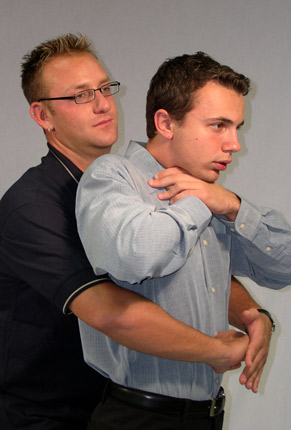Emergency First Aid is for people who want a general knowledge of first aid principles and the emergency treatment of injuries. Skills include: victim assessment, CPR, choking and what to do for external bleeding, heart attack, stroke wounds and burns. Includes CPR-B certification. Recognized by Ontario's Workplace Safety & Insurance Board.
The first aid program is not restricted to aquatic candidates. You can use the Lifesaving Society's first aid awards to train non-aquatic staff (camp, playground, maintenance, etc.) and the general public.
Prerequisite: None.
Instruction & certification: Current Emergency First Aid Instructors or First Aid Instructors teach and certify candidates. Lifesaving Society Emergency First Aid certification is valid for 36 months from the certification date.
Candidate recognition: Certification card.
Required reference material: Canadian First Aid Manual or Canadian Lifesaving Manual. (Note that some affiliates provide materials to candidates, and some require candidates to purchase materials on their own. Double check before you purchase.)
Recertification: Emergency First Aid recertification is the same course.
:::

at-a-glance
- Through practical activities wherever possible, demonstrate an understanding of the goals of first aid.
- Through practical activities wherever possible, demonstrate an understanding of the legal implications of providing first aid treatment.
- Through practical activities wherever possible, demonstrate an understanding of the principles of universal precautions, including barrier devices, hand washing, and use of gloves.
- Through practical activities wherever possible, demonstrate an understanding of the anatomy and physiology of the ABC priorities.
- Demonstrate primary assessment of a victim including:
- scene survey
- level of consciousness
- airway, breathing, circulation
- major bleeding
- mechanism of injury
Demonstrate secondary assessment of a victim including:
- vital signs
- head-to-toe examination
- history
- Demonstrate one-rescuer adult, child and infant cardiopulmonary resuscitation on a manikin and how to use an AED.
- :::
- Simulate the treatment of:
- conscious adult, child or infant with an obstructed airway
- complications: a pregnant woman and person who is obese
- Simulate the treatment of an unconscious adult, child or infant with an obstructed airway.
- Demonstrate the effective direction of bystanders to activate EMS.
- Demonstrate the recognition and care of a victim suffering from the following respiratory emergencies:
- Demonstrate the recognition and care of a victim suffering from:
- shock
- heart attack or angina
- external bleeding
- stroke / transient ischemic attack
- Demonstrate the recognition and care of a victim suffering from:
- abdominal injury
- burn injury
- facial injury
- Demonstrate the recognition and care of an unconscious victim. Victim types should include fainting.
First Aid Prerequisites
When a first aid certification from an agency other than the Lifesaving Society is used as a prerequisite for a Lifesaving Society award, a photocopy of the certification card must accompany the Lifesaving Society test sheets. The Society will not issue awards if this proof of prerequisite is missing.
:::
For prerequisite purposes, the Lifesaving Society accepts Emergency First Aid and Standard First Aid certifications provided by training agencies approved by the Ontario Ministry of Labour or the Ontario Ministry of Health and Long-Term Care. Here is the list of approved agencies.